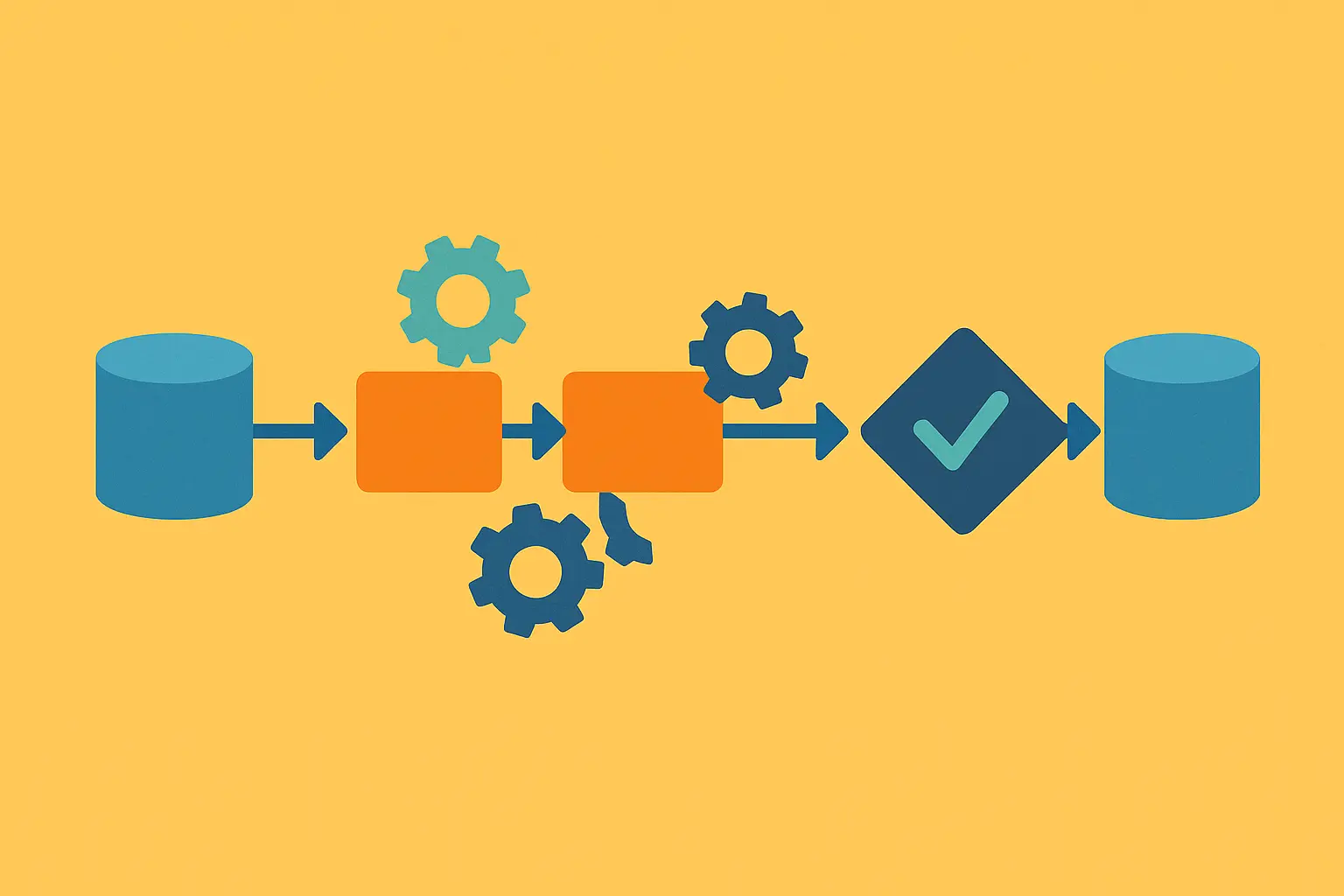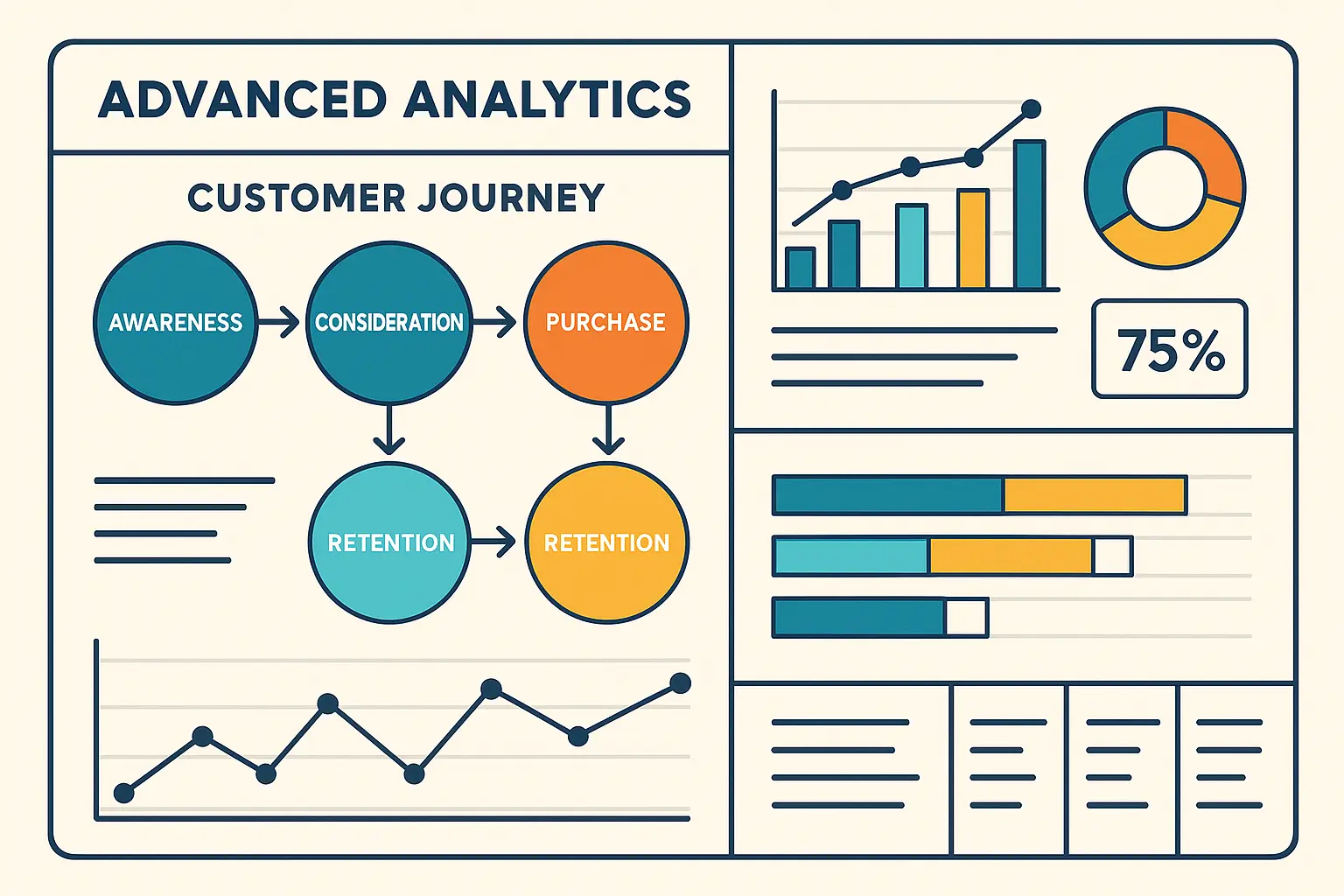
With over 250,000 live websites globally powered by Magento according to Amasty, the platform is still going strong in the enterprise e-commerce world. But here’s the thing – understanding what actually works in Magento implementations means looking past the flashy numbers and success stories. The real gold is in the case studies that show you both what went right AND what went sideways.
Table of Contents
-
Understanding What Makes Magento Case Studies Worth Reading
-
Breaking Down the Business Side of Things
-
Getting Into the Technical Nitty-Gritty
-
Measuring Success: Numbers That Actually Matter
-
Common Problems and How Teams Solved Them
-
What You Can Learn From Other People’s Wins and Losses
-
After Launch: Growing Your Magento Store
-
Industry-Specific Lessons You Can Apply
-
Final Thoughts
TL;DR
-
Real Magento case studies show you the whole picture – business decisions AND technical choices, not just the wins
-
Performance metrics aren’t just about revenue – site speed, uptime, and user experience tell the real story
-
Every single implementation hits data migration headaches and integration nightmares, but the smart teams document their solutions
-
What happens after launch usually matters more for long-term success than how perfect your initial build was
-
Different industries need totally different approaches – B2B setups are nothing like retail stores
-
B2B implementations need completely different game plans than retail stores, especially when it comes to pricing and managing customers
Understanding What Makes Magento Case Studies Worth Reading
Look, most Magento case studies you’ll stumble across online are basically fancy sales brochures. But the good ones? They actually dig into the nitty-gritty of what went right AND what went sideways. Here’s what I’ve learned after reading through probably a hundred of these things: the best case studies don’t just pat themselves on the back – they show you their playbook.
Reading through dozens of Magento implementations taught me something important: the game plan matters way more than the flashy results. When a magento case study walks you through their decision-making process, you can actually adapt their thinking to your own situation. The strategy they used to evaluate options, prioritize features, and measure outcomes becomes a template you can actually follow.
You know what separates the useful stuff from the fluff? The messy details. Real projects involve compromises, things that didn’t work the first time, and solutions nobody really wanted but had to live with. When a case study walks you through why they picked option B over option A (even though option A looked better on paper), that’s gold.
Understanding how to systematically analyze case studies mirrors the methodical approach we outline in our advanced analytics strategic growth guide, where data-driven decision making becomes the foundation for sustainable business outcomes.
According to MageComp’s latest research, “transactions worth $155 billion are recorded annually by Magento,” which shows just how much commerce flows through this platform. That’s exactly why understanding what actually works becomes so critical for business success.

How to Structure Your Analysis
Breaking down case studies effectively means looking at both business context and technical execution at the same time. Here’s what I’ve noticed: most people focus too heavily on one side or the other, missing how business requirements and technical decisions actually connect. The framework I use looks at industry needs, competitive pressures, and technical constraints as pieces of the same puzzle.
You can’t understand why a team chose specific Magento configurations without knowing their business environment. B2B manufacturers need totally different functionality than fashion retailers, and those differences drive every major technical decision. The competitive landscape also shapes priorities – if competitors are winning on site speed, performance optimization becomes make-or-break.
Technical implementation details only make sense when you understand the business context. When you see complex custom development, ask what business requirement drove that decision. Architecture choices, hosting decisions, and integration approaches all stem from specific business needs that the case study should explain clearly.
Consider Paul Smith’s global expansion case study. The fashion brand needed to manage complex international operations while keeping their brand consistent everywhere. Their decision to use Magento’s multi-store capabilities wasn’t just technical – it solved the business challenge of managing different currencies, languages, and regional product catalogs while keeping operational overhead manageable. This business context explains why they prioritized multi-store functionality over other potential customizations.
Breaking Down the Business Side of Things
Industry Requirements That Shape Everything
Different industries push Magento in completely different directions, and trust me, this matters way more than most people realize. I’ve worked with B2B manufacturers who needed crazy complex pricing setups, and fashion retailers who just wanted their product photos to look amazing. Same platform, totally different priorities.
Manufacturing companies using Magento need sophisticated pricing structures that handle volume discounts, customer-specific rates, and approval workflows. Their case studies typically showcase custom pricing engines and integration with existing ERP systems. Fashion retailers, on the other hand, obsess over visual merchandising tools, seasonal inventory management, and handling all those size and color combinations without making customers want to scream.
Healthcare and pharmaceutical companies face regulatory compliance requirements that don’t exist in other industries. Their Magento implementations include custom security protocols, audit trails, and restricted access controls. These industry-specific needs create entirely different success metrics and optimization priorities.
The strategic approach to understanding industry-specific requirements aligns with the comprehensive methodology we detail in our market sizing guide, where identifying specific business opportunities requires deep analysis of industry dynamics and competitive positioning.
|
Industry |
Primary Magento Focus Areas |
Key Success Metrics |
|---|---|---|
|
B2B Manufacturing |
Custom pricing, ERP integration, customer hierarchies |
Order processing efficiency, pricing accuracy |
|
Fashion Retail |
Visual merchandising, inventory variants, seasonal catalogs |
Conversion rates, inventory turnover |
|
Healthcare/Pharma |
Compliance protocols, audit trails, restricted access |
Security compliance, order accuracy |
|
Electronics |
Technical specifications, compatibility guides, warranty management |
Product discovery, technical support integration |
|
Food & Beverage |
Inventory freshness, regulatory labeling, subscription management |
Customer retention, inventory waste reduction |

Competitive Analysis That Actually Matters
Understanding the competitive environment helps explain why case study teams prioritized certain features over others, but most studies skip this crucial context. I’ve learned to look for mentions of competitive advantages the new Magento implementation provided, whether through unique functionality, superior performance, or better user experience. The competitive landscape often determines which technical investments deliver the highest business impact.
When competitors are winning on checkout conversion rates, you’ll see case studies emphasizing streamlined purchase flows and payment option expansion. If the competition has better mobile experiences, the technical implementation focuses on responsive design and mobile performance optimization. These competitive pressures shape every major decision.
Market positioning also influences technical choices. Premium brands invest more in custom design and exclusive features, while value-focused companies prioritize cost-effective solutions and operational efficiency. The competitive strategy drives the entire technical approach.
Recent market shifts demonstrate this competitive pressure perfectly. “Audio Advice sees 21% revenue lift after migrating to Shopify Plus” from 01net.it shows how businesses are making platform decisions based on competitive needs for operational agility and reduced technical complexity, highlighting the importance of understanding competitive positioning when analyzing Magento implementations.
Getting Into the Technical Nitty-Gritty
Architecture Decisions and Why They Matter
The architectural choices teams make during Magento implementation determine long-term scalability and maintenance requirements, but most case studies gloss over these critical decisions. Here’s what I’ve found: successful implementations carefully document their hosting decisions, third-party integration approaches, and custom development strategies because these choices impact everything that comes after. Understanding the reasoning behind architectural decisions helps you avoid common pitfalls in your own projects.
Hosting decisions affect everything from performance to security to ongoing costs. Cloud-based implementations offer scalability but require different optimization approaches than dedicated servers. The case studies that include detailed hosting analysis help you understand the trade-offs between different infrastructure options.
Third-party integrations often determine implementation complexity and ongoing maintenance requirements. Teams that document their integration decision-making process reveal how they evaluated different options, managed data synchronization challenges, and planned for future system changes.

Performance Optimization Strategies That Work
Okay, real talk – Magento can be slow. Like, really slow if you don’t know what you’re doing. But here’s what I’ve noticed: the teams that actually fix performance issues don’t just throw more server power at the problem. They get methodical about it, addressing multiple bottlenecks simultaneously rather than just applying generic fixes that don’t account for specific business requirements and traffic patterns.
Caching is huge, but it’s not one-size-fits-all. A B2B site where prices change constantly needs a totally different caching strategy than a retail store with pretty stable pricing. The case studies that actually explain this stuff? Those are the ones worth bookmarking.
Database optimization sounds boring, but when you’ve got thousands of products and your site starts crawling, you’ll care real quick. Successful implementations document their indexing strategies, query optimization approaches, and database maintenance procedures. These technical details help you plan for similar challenges in your own projects.
Front-end performance improvements often deliver the biggest user experience gains. Case studies that include specific optimization techniques – image compression, JavaScript bundling, CSS optimization – provide actionable insights you can implement immediately.
Performance improvements can be dramatic when implemented correctly. According to MageComp, “Magento 2 stores can manage 600 transactions in the same timeframe” compared to 500 for Magento 1, demonstrating how architectural improvements directly impact transaction processing capacity and overall site performance.
Security Implementation That Goes Beyond Basics
PCI compliance is just the starting point for Magento security, and the most comprehensive case studies detail the additional security measures teams implemented to protect customer data and business operations. Here’s what I’ve noticed: successful implementations treat security as an ongoing process rather than a one-time setup, with custom monitoring systems and response protocols that go well beyond standard Magento security features.
Custom security protocols often address industry-specific requirements or unique business risks. Healthcare companies implement additional data encryption and access controls, while B2B platforms focus on customer data segregation and role-based permissions. These custom approaches provide templates for similar implementations.
Monitoring systems help teams detect and respond to security threats before they impact business operations. The case studies that include security monitoring details show how teams balanced automated detection with human oversight to maintain both security and operational efficiency.
Security considerations have become increasingly critical. “Cybersecurity Ventures in 2023, the cost of cybercrime is expected to reach $10.5 trillion per year by 2025” according to Programming Insider, emphasizing why comprehensive security implementation in Magento projects requires professional expertise and ongoing vigilance.
Measuring Success: Numbers That Actually Matter
Technical Performance Indicators
Site speed metrics tell only part of the performance story, and the most useful case studies track comprehensive technical indicators that directly impact user experience and business operations. Here’s what I’ve learned: Time to First Byte, Core Web Vitals scores, and page load times need to be analyzed together to understand real performance impact. These metrics become even more valuable when case studies show how performance improvements translated into business outcomes.
Core Web Vitals have become critical for both user experience and search rankings. Successful implementations document their strategies for improving Largest Contentful Paint, First Input Delay, and Cumulative Layout Shift scores. The specific techniques they used provide actionable optimization approaches.
System reliability metrics – uptime, error rates, recovery times – demonstrate the stability of the implemented solution. These numbers become especially important for high-volume operations where downtime directly impacts revenue. Case studies that include reliability data help you set realistic expectations and plan appropriate infrastructure investments.
The comprehensive approach to measuring technical performance mirrors the systematic methodology outlined in our GA4 audit guide, where understanding multiple data points simultaneously provides the complete picture of digital performance.

Business Impact Measurement
Here’s where most case studies drive me crazy – they’ll throw around revenue numbers without any context. “We increased sales by 50%!” Okay, but was that because of the new website, or because you launched during Black Friday, or because your competitor went out of business? The most valuable studies show how teams separated platform improvements from other business factors like marketing campaigns, seasonal trends, and market conditions. This attribution analysis helps you set realistic expectations for your own implementation results.
Conversion rates are tricky too. B2B customers shop totally differently than someone buying a t-shirt online. Mobile traffic converts differently than desktop users. Case studies that break down conversion improvements by segment provide more actionable insights.
Customer acquisition cost changes reveal how the new platform affected marketing efficiency across different channels. Some Magento implementations improve organic search performance, reducing paid advertising dependence. Others enhance email marketing capabilities or social media integration, affecting acquisition costs in different ways.
Rite Aid’s implementation demonstrates comprehensive measurement approaches. Their case study documented an 80% increase in conversion rates alongside a double-digit average order value growth and a 50% reduction in bounce rates. By tracking multiple metrics simultaneously, they could understand how different improvements reinforced each other rather than viewing each metric in isolation.
ROI Analysis That Makes Sense
Calculating ROI for Magento implementations involves more than comparing development costs to revenue increases, and the most thorough case studies account for ongoing maintenance, training, and optimization expenses. Here’s what I’ve learned: successful teams track both direct costs and indirect benefits like operational efficiency improvements and reduced manual processes. This comprehensive approach provides a more accurate picture of long-term value.
Direct implementation costs include development, design, testing, and launch expenses. But ongoing costs – hosting, maintenance, updates, training – often exceed initial development investments over time. Case studies that include total cost of ownership analysis help you budget more accurately.
Indirect benefits can be substantial but harder to quantify. Automated processes reduce manual labor costs, improved analytics enable better decision-making, and enhanced customer experience increases lifetime value. The case studies that attempt to measure these indirect benefits provide the most complete ROI picture.
The comprehensive ROI analysis approach aligns with the calculation methodologies detailed in our ROI calculator guide, where understanding both direct and indirect value components ensures accurate investment evaluation.
|
ROI Component |
Direct Costs |
Indirect Benefits |
Measurement Approach |
|---|---|---|---|
|
Development |
Initial build, customization, testing |
Reduced manual processes, automation savings |
Compare pre/post labor hours |
|
Performance |
Hosting, CDN, optimization tools |
Improved conversion rates, reduced bounce |
Track revenue per visitor improvements |
|
Maintenance |
Updates, security patches, support |
System reliability, reduced downtime costs |
Calculate downtime prevention value |
|
Training |
Team education, documentation |
Faster response times, reduced errors |
Measure efficiency improvements |
|
Integration |
Third-party connections, API development |
Streamlined workflows, data accuracy |
Track process time reductions |
Common Problems and How Teams Solved Them
Data Migration Nightmares
Every single Magento project involves moving data from somewhere else, and every single time, it’s messier than anyone expects. I can’t tell you how many times I’ve heard “Oh, our data is pretty clean” only to find product descriptions in the price field and customer names that are just random numbers. The most valuable case studies document their data migration challenges in detail because these issues are so universal. The specific solutions teams developed for data transformation, validation, and cleanup provide templates for avoiding similar problems in future projects.
Legacy systems are the worst. Your old system called it “categories,” but Magento wants “attribute sets.” Your customer records have three different phone number formats. Your product catalog has items that don’t exist anymore but are still tied to old orders. Successful migrations require extensive data cleanup and transformation processes.
Data validation becomes critical when migrating large datasets. Teams need to verify that product information, customer accounts, and order histories transferred correctly without corrupting existing data. The validation processes documented in case studies help you plan appropriate testing procedures.

Third-Party Integration Headaches
Connecting Magento to your existing systems sounds simple in theory. In practice? It’s like trying to get your grandmother’s flip phone to sync with your Tesla. The integration strategies documented in case studies provide roadmaps for managing similar technical challenges that most teams underestimate initially.
ERP integration is where dreams go to die. Everyone wants real-time everything until they realize that means their website crashes every time someone updates inventory. The smart teams use batch processing and build in error handling, because stuff will break. Real-time synchronization sounds ideal but creates performance bottlenecks and system dependencies that can cause cascading failures.
CRM integration gets weird fast, especially for B2B sites. You’ve got customer hierarchies, approval workflows, and data privacy rules that make your head hurt. B2B implementations especially need sophisticated customer hierarchy management that connects Magento accounts with existing business relationships.
Customization vs. Core Functionality Balance
This is the big question that keeps everyone up at night: do we customize the heck out of Magento to get exactly what we want, or do we change our business processes to fit what Magento does out of the box? Successful implementations carefully document their customization decisions because these choices impact every future update and enhancement. The decision-making frameworks teams used help you evaluate similar trade-offs in your own projects.
Heavy customization gives you superpowers, but every time Magento releases an update, you’re holding your breath hoping nothing breaks. I’ve seen companies spend more on maintenance than they did on the original build because they went crazy with custom code. These choices complicate future Magento updates and increase maintenance costs.
Working within Magento’s constraints sometimes means telling the CEO that no, we can’t have that exact checkout flow they saw on their competitor’s site. But it also means updates don’t turn into six-month projects. This approach simplifies maintenance and ensures compatibility with future platform updates.
The balance between customization and core functionality becomes clearer when considering maintenance overhead. According to MageComp, “over 3890 Magento extensions are offered by the Magento community,” providing extensive pre-built functionality that can reduce custom development needs while maintaining upgrade compatibility.

What You Can Learn From Other People’s Wins and Losses
Project Management Insights That Actually Help
Most case studies skip the project management stuff, which is crazy because that’s usually where projects go off the rails. The technical team knows how to code, but coordinating between IT, marketing, operations, and whoever else has opinions about the website? That’s where things get messy. The studies which include project management details provide the most actionable insights because they show how teams navigated common implementation challenges like scope creep, timeline delays, and stakeholder communication issues.
The teams that actually finish on time and on budget have figured out communication. They’ve got regular check-ins, clear decision-making processes, and someone whose job it is to say “no, we’re not adding that feature three weeks before launch.” Dedicated project managers help coordinate between technical and business teams, but the specific communication protocols and decision-making processes vary significantly.
Timeline management is an art form. Everything takes longer than you think, especially data migration and testing. The realistic project managers build in buffers and break things into phases so they can actually measure progress. Realistic milestone planning requires understanding dependencies between different project components and building appropriate buffers for unexpected challenges.
Courts Asia’s implementation showcased effective project management by focusing on measurable milestones. Their team achieved a 30% improvement in website speed and 60% increase in online sales by breaking the project into phases with specific performance targets. This phased approach allowed them to validate improvements at each stage rather than waiting until full launch to measure success.
Long-term Maintenance Considerations
Magento implementations require ongoing maintenance, security updates, and feature enhancements that many teams underestimate during initial planning. Here’s what I’ve learned: the most valuable case studies include post-launch maintenance strategies because these ongoing requirements often determine long-term success more than initial implementation quality. Understanding maintenance requirements helps you plan appropriate resources and budget for sustained platform operation.
Security update management requires balancing platform security with custom functionality preservation. Teams need procedures for testing updates against custom code and third-party integrations before deploying to production systems. The maintenance protocols documented in case studies provide templates for developing your own update procedures.
Scalability planning becomes important as business requirements evolve and traffic grows. Successful implementations document their approaches for monitoring performance, identifying bottlenecks, and planning infrastructure upgrades. These scalability strategies help you prepare for future growth challenges.

After Launch: Growing Your Magento Store
Marketing Integration Strategies
Here’s where Magento gets really interesting – it’s not just a store, it’s a data collection machine. Every click, every purchase, every abandoned cart is information you can use to get smarter about your customers. Successful post-launch optimization focuses on leveraging Magento’s customer data and behavioral tracking to drive sustainable growth through targeted campaigns and personalized experiences. The marketing integration approaches documented in case studies show how teams transformed platform capabilities into competitive advantages.
SEO with Magento can be amazing or terrible, depending on how you set it up. URL structure matters. Site speed matters a lot. The teams that document their SEO strategies aren’t just talking about keywords – they’re showing how they made the whole site search-friendly. Schema markup implementation, and site architecture improvements can significantly impact organic search visibility.
Email marketing connected to Magento behavior data is where the magic happens. Someone looked at a product but didn’t buy? Email them. Someone bought something three months ago and might need a refill? Email them. The automation possibilities are endless, but you need to set it up right. Purchase history, browsing patterns, and engagement metrics enable sophisticated segmentation and personalized campaigns.
The strategic approach to marketing integration mirrors the comprehensive framework outlined in our marketing ROI calculator guide, where understanding the connection between platform capabilities and marketing outcomes drives sustainable growth strategies.
Advanced Analytics and Business Intelligence
Magento generates enormous amounts of customer and transaction data, but transforming this information into actionable business insights requires custom reporting and analytics implementations. Here’s what I’ve learned: successful teams invest heavily in business intelligence capabilities because data-driven decision making becomes a significant competitive advantage. The analytics approaches documented in case studies show how teams built comprehensive reporting systems that provide real-time visibility into business performance.
Multi-channel attribution modeling helps teams understand customer journeys across different touchpoints and optimize marketing spend allocation. This analysis becomes especially important for businesses using multiple marketing channels and customer acquisition strategies. The attribution approaches documented in case studies provide frameworks for similar analysis projects.
Inventory intelligence and demand forecasting use transaction data to predict demand patterns and optimize inventory management. These capabilities become critical for businesses with seasonal demand fluctuations or complex product catalogs. Case studies that include inventory optimization strategies show how teams leveraged Magento data for operational improvements.

Industry-Specific Lessons You Can Apply
B2B E-commerce Transformations
B2B Magento is a whole different animal. Your customers aren’t just buying stuff – they’re managing budgets, getting approvals, and dealing with company purchasing policies that make no sense to anyone outside that company. Successful B2B case studies focus heavily on workflow automation and customer relationship management because these capabilities directly impact sales efficiency and customer satisfaction. The B2B-specific solutions documented in these studies provide templates for similar business requirements.
Customer hierarchies get complicated fast. The person browsing might not be the person who approves the purchase, who might not be the person who actually places the order. And everyone needs to see different pricing based on their company’s contract. B2B customers expect pricing that reflects their business relationship and purchase history.
Quote management becomes crucial because B2B sales rarely happen at list price. Someone wants 500 units with custom packaging delivered on a specific date? That needs a quote, approval workflow, and probably three phone calls to figure out logistics. These capabilities reduce manual processes and improve sales team efficiency. Case studies that include quote management details provide blueprints for similar B2B functionality.
High-Volume Retail Operations
When you’re processing thousands of orders a day, everything that works fine for smaller stores starts breaking down. Server capacity, database queries, inventory updates – it all needs to be bulletproof. Enterprise-level retail operations push Magento to its limits in terms of traffic handling, transaction processing, and catalog complexity. The scaling strategies documented in these case studies provide roadmaps for handling similar volume challenges.
Multi-store setups let you manage different brands or regions from one backend, but the complexity multiplies fast. Different pricing, different inventory, different tax rules – it’s like juggling while riding a unicycle. This approach reduces operational complexity while providing flexibility for different markets. The multi-store strategies documented in case studies show how teams balanced centralized management with local customization needs.
Currency and Tax Management Systems
International retail operations require sophisticated currency conversion and tax calculation systems that handle complex regulatory requirements across different jurisdictions. Here’s what I’ve found: successful global implementations invest heavily in automated tax management because manual processes become impossible at scale. The tax and currency solutions documented in case studies show how teams built compliant systems that adapt to changing regulations without requiring constant manual updates.
Real-time currency conversion affects pricing display, payment processing, and financial reporting. Fluctuating exchange rates create challenges for inventory valuation and profit margin calculations. Teams need systems that handle currency conversion consistently across all customer touchpoints while maintaining accurate financial records.
Tax compliance varies dramatically between countries, states, and even local jurisdictions. Automated tax calculation systems reduce compliance risks and operational overhead, but they require careful configuration and ongoing maintenance. The tax management approaches documented in case studies provide frameworks for handling similar compliance challenges.
Content Localization and Cultural Adaptation
Global Magento implementations require more than language translation – successful international expansion involves adapting entire user experiences for different cultural contexts and market expectations. Here’s what I’ve noticed: the most successful global case studies document their localization strategies in detail because cultural adaptation often determines market success more than technical functionality. These localization approaches provide templates for entering new international markets effectively.
Payment method preferences vary significantly between countries and regions. European customers expect different payment options than Asian markets, and mobile payment adoption rates differ dramatically across regions. Successful implementations research local payment preferences and integrate appropriate options for each market.
Shopping behavior patterns and user interface expectations also vary culturally. Some markets prefer detailed product information and comparison tools, while others prioritize social proof and recommendation systems. The cultural adaptation strategies documented in case studies help teams customize user experiences for different market expectations.

Final Thoughts
Look, Magento case studies are goldmines if you know how to read them. But you’ve got to look past the marketing speak and find the teams that actually tell you how they solved real problems. The most valuable studies document both technical decisions and business outcomes, showing how teams navigated challenges and measured results throughout the implementation process.
What separates successful Magento implementations from expensive failures isn’t just technical expertise – it’s having a solid game plan for analyzing requirements, making decisions, and measuring outcomes that these case studies reveal. Whether you’re planning your first Magento implementation or trying to optimize an existing installation, the frameworks and strategies documented in comprehensive case studies provide roadmaps for avoiding common pitfalls and replicating proven success patterns.
Bottom line: treat these case studies like battle plans, not victory laps. When teams document their decision-making processes, technical trade-offs, and measurement strategies, they create resources that benefit the entire Magento community and help businesses make better platform investment decisions. The teams that share their playbooks are helping everyone build better stores.



